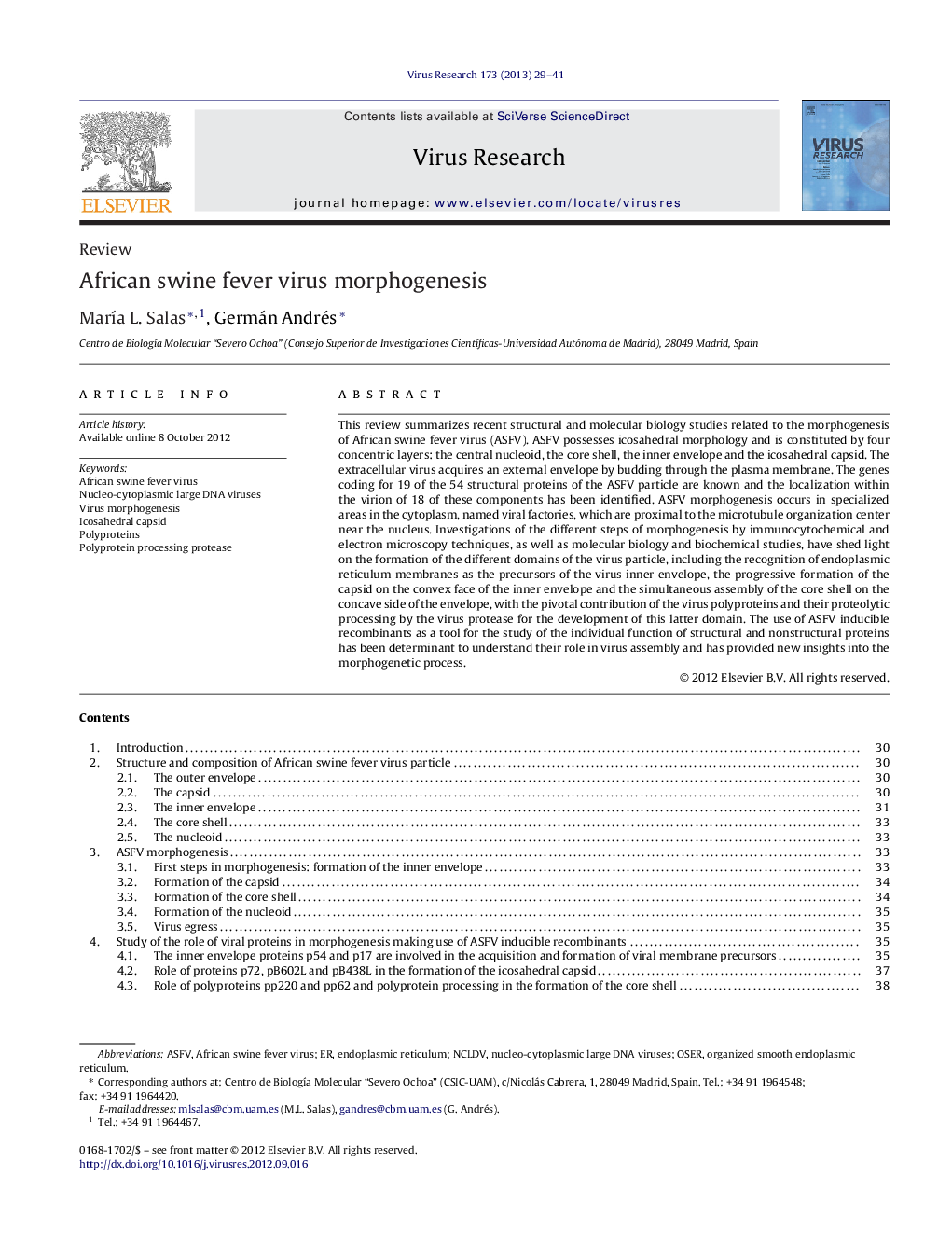| Article ID | Journal | Published Year | Pages | File Type |
|---|---|---|---|---|
| 3428790 | Virus Research | 2013 | 13 Pages |
This review summarizes recent structural and molecular biology studies related to the morphogenesis of African swine fever virus (ASFV). ASFV possesses icosahedral morphology and is constituted by four concentric layers: the central nucleoid, the core shell, the inner envelope and the icosahedral capsid. The extracellular virus acquires an external envelope by budding through the plasma membrane. The genes coding for 19 of the 54 structural proteins of the ASFV particle are known and the localization within the virion of 18 of these components has been identified. ASFV morphogenesis occurs in specialized areas in the cytoplasm, named viral factories, which are proximal to the microtubule organization center near the nucleus. Investigations of the different steps of morphogenesis by immunocytochemical and electron microscopy techniques, as well as molecular biology and biochemical studies, have shed light on the formation of the different domains of the virus particle, including the recognition of endoplasmic reticulum membranes as the precursors of the virus inner envelope, the progressive formation of the capsid on the convex face of the inner envelope and the simultaneous assembly of the core shell on the concave side of the envelope, with the pivotal contribution of the virus polyproteins and their proteolytic processing by the virus protease for the development of this latter domain. The use of ASFV inducible recombinants as a tool for the study of the individual function of structural and nonstructural proteins has been determinant to understand their role in virus assembly and has provided new insights into the morphogenetic process.
Graphical abstractFigure optionsDownload full-size imageDownload as PowerPoint slideHighlights► ASFV consists of a DNA-containing nucleoid, a core shell, an inner lipid envelope, an icosahedral capsid and an outer lipid envelope. ► ASFV morphogenesis occurs in specialized cytoplasmic areas close to the nucleus named viral factories. ► ASFV inner envelope is derived from the endoplasmic reticulum through a mechanism poorly understood, which depends on viral protein p54. ► Capsid assembly depends on expression of capsid proteins p72 and B438L and on viral chaperone B602L. ► ASFV polyproteins pp220 and pp62 and their proteolytic processing by viral protease pS273R play a pivotal role in core assembly.
